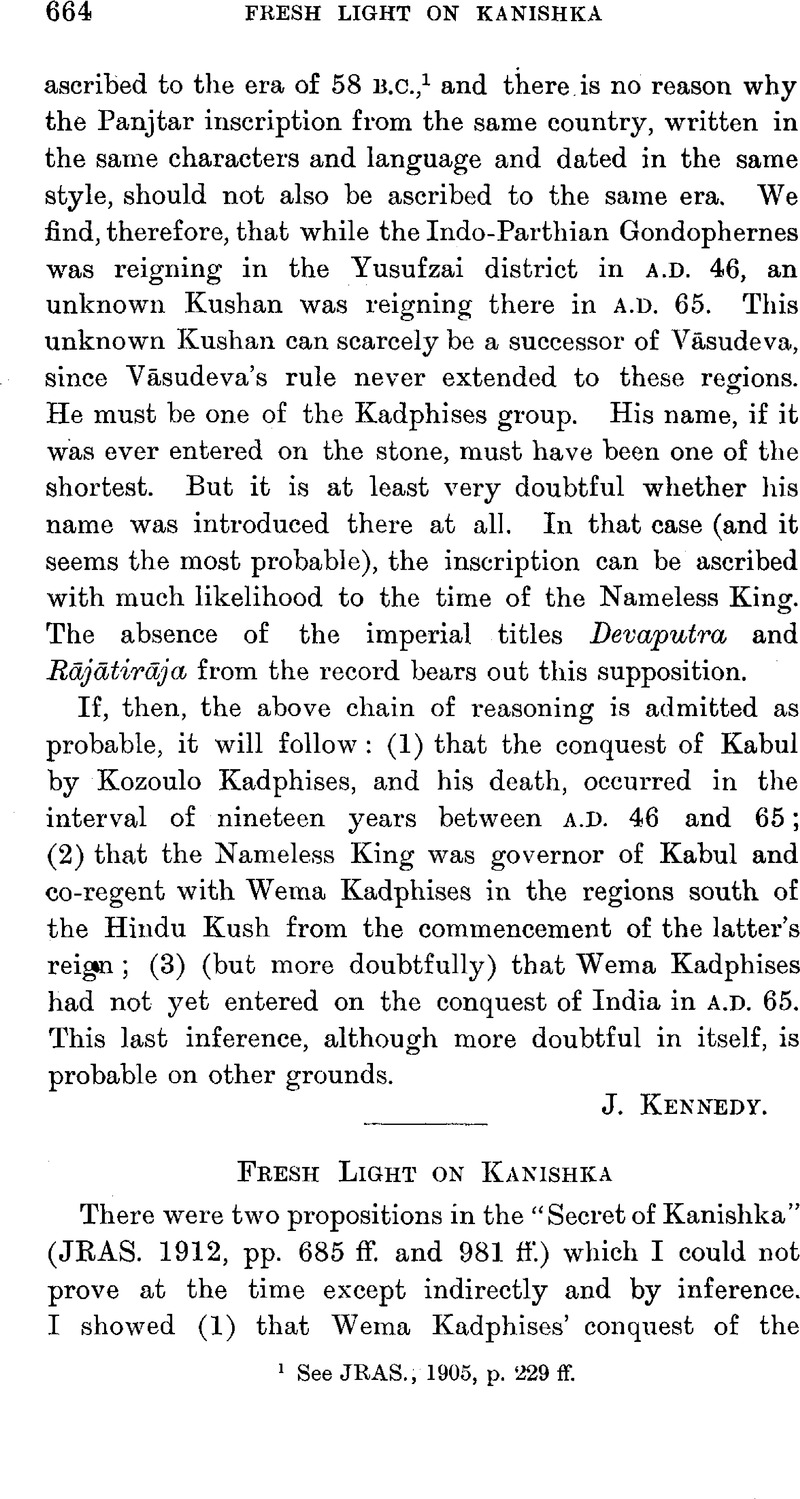No CrossRef data available.
Article contents
Abstract

- Type
- Miscellaneous Communications
- Information
- Copyright
- Copyright © The Royal Asiatic Society 1913
References
page 665 note 1 Professor Sten Konow was the first to point out the correct rendering of this passage, and has published it recently in his paper on the “Kushanas” at the Historical Congress of London. My thanks are due to Mr. Giles, of the British Museum, for his assistance in the matter. I may add that this paper was written some time before the delivery of Professor Konow's lecture at the Congress.
page 665 note 2 The reference is to the standard edition of the Dynastic Histories.
page 666 note 1 JRAS, 1912, p. 669.Google Scholar
page 666 note 2 T'oung-pao, sér, II. vol. viii, No. 2, p. 168.Google Scholar
page 666 note 3 JRAS. 1913, p. 369.Google Scholar
page 667 note 1 JRAS. 1912, p. 1009.Google Scholar
page 668 note 1 For the contemporary history of Elymais and Persis see v. Gutschmid, Geschichte Irans, pp. 156Google Scholar ff., and Aliotte de la Fuye, Monnaies de l'Élymaïde, pp. 42ffGoogle Scholar.; also Head, Historia Numorum, s.v. Persis.
page 668 note 2 Op. cit., p. 29.
page 669 note 1 I have compared, with Mr. Allan's assistance, some of the coins of Phraates in the British Museum with the Kushan. The only distinctive letters I could find common to both were the alpha, and epsilon. The Kushan letters appeared to me sharper and more angular; more italianated, as our writing masters would have said. The epsilon in particular sometimes resembled a cuneiform wedge, a form which is occasionally found in Egyptian graffiti.


